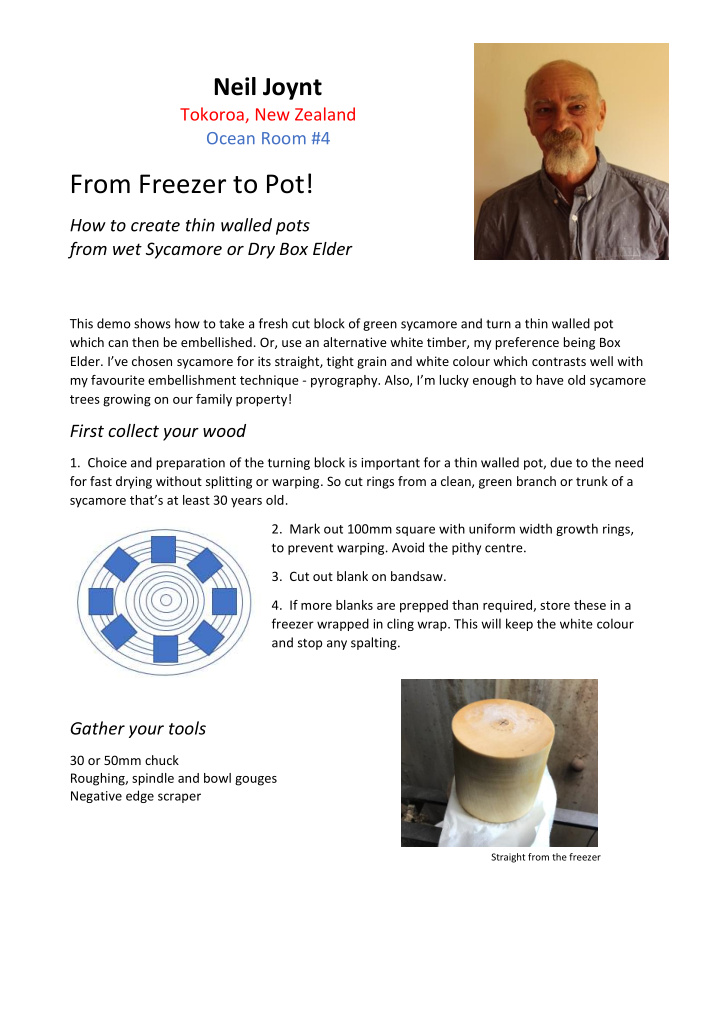



Neil Joynt Tokoroa, New Zealand Ocean Room #4 From Freezer to Pot! How to create thin walled pots from wet Sycamore or Dry Box Elder This demo shows how to take a fresh cut block of green sycamore and turn a thin walled pot which can then be embellished. Or, use an alternative white timber, my preference being Box Elder. I’ve chosen sycamore for its straight, tight grain and white colour which contrasts well with my favourite embellishment technique - pyrography. Also, I’m lucky enough to have old sycamore trees growing on our family property! First collect your wood 1. Choice and preparation of the turning block is important for a thin walled pot, due to the need for fast drying without splitting or warping. So cut rings from a clean, green branch or trunk of a sycamore that’s at least 30 years old . 2. Mark out 100mm square with uniform width growth rings, to prevent warping. Avoid the pithy centre. 3. Cut out blank on bandsaw. 4. If more blanks are prepped than required, store these in a freezer wrapped in cling wrap. This will keep the white colour and stop any spalting. Gather your tools 30 or 50mm chuck Roughing, spindle and bowl gouges Negative edge scraper Straight from the freezer
The fun begins 1. Mark centre on blank (mine is 100 x 100 x 140 long) and set up between centres on your lathe. 2. Use a roughing gouge to turn the blank into a parallel round. 3. Decide the shape of your pot and turn to shape, turning a tenon at one end to suit your chuck. 4. Finish sand the outer surface. 5. For a border embellishment, use a skew to make the cuts and burnish using piano wire. 6. Remove from centres and remount in chuck to begin hollowing. 7. Carefully cut away using your gouge and scraper to end up with a 2 to 3mm wall thickness. 8. Sand the inside to remove any torn grain. 9. Remove pot from chuck and allow a couple of days for drying. Turn the blank between centres Rough out form and cut tenon for chuck mounting Create the embellishment area using burnishing wire Hollowed out to a uniform thickness Using a light to gauge uniform thickness Masking off the embellishment area
Let’s get creative 1. Pyrography uses a combination of heat and pressure to achieve shades of brown to black, and different pyro tips for various textures. Test heat settings on scrap wood. 2. Centre punching uses a spring- loaded punch to create ‘dimples’. A nice contrast to the burnt texture from using a pyro ball tip. 3. Colouring uses a water-based dye to take a rather bland wood and raise its interest level. Use a ½ round pyro tip for circles Use a pyro ball tip for burnt texture Use centre punch for clean texture . March 2019
Recommend
More recommend